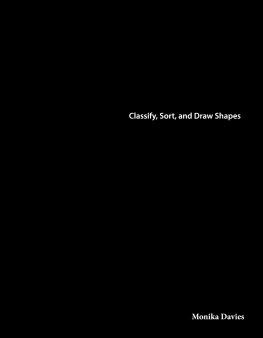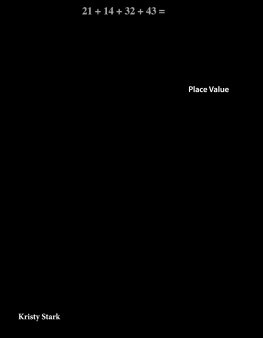Monika Davies - The Hidden World of Toilets: Volume
Here you can read online Monika Davies - The Hidden World of Toilets: Volume full text of the book (entire story) in english for free. Download pdf and epub, get meaning, cover and reviews about this ebook. year: 2018, publisher: Triangle Interactive, LLC, genre: Romance novel. Description of the work, (preface) as well as reviews are available. Best literature library LitArk.com created for fans of good reading and offers a wide selection of genres:
Romance novel
Science fiction
Adventure
Detective
Science
History
Home and family
Prose
Art
Politics
Computer
Non-fiction
Religion
Business
Children
Humor
Choose a favorite category and find really read worthwhile books. Enjoy immersion in the world of imagination, feel the emotions of the characters or learn something new for yourself, make an fascinating discovery.
- Book:The Hidden World of Toilets: Volume
- Author:
- Publisher:Triangle Interactive, LLC
- Genre:
- Year:2018
- Rating:4 / 5
- Favourites:Add to favourites
- Your mark:
- 80
- 1
- 2
- 3
- 4
- 5
The Hidden World of Toilets: Volume: summary, description and annotation
We offer to read an annotation, description, summary or preface (depends on what the author of the book "The Hidden World of Toilets: Volume" wrote himself). If you haven't found the necessary information about the book — write in the comments, we will try to find it.
The Hidden World of Toilets: Volume — read online for free the complete book (whole text) full work
Below is the text of the book, divided by pages. System saving the place of the last page read, allows you to conveniently read the book "The Hidden World of Toilets: Volume" online for free, without having to search again every time where you left off. Put a bookmark, and you can go to the page where you finished reading at any time.
Font size:
Interval:
Bookmark:
0covercover.xhtmlThe Hidden World of Toilets Volume Monika Daviescover1page0001page0001.xhtml22page0002page0002.xhtmlThe Hidden World of Toilets Volume33page0003page0003.xhtml44page0004page0004.xhtmlTable of Contents Toiling Toilets 4 A Whirling History 6 The Birth of the Flush Toilet 10 The Ins & Outs 12 Global Toilets 16 Out-of-This-World Toilets 20 Toilets in Developing Nations 22 Toilets for Tomorrow 26 Problem Solving 28 Glossary 30 Index 31 Answer Key 3255page0005page0005.xhtmlToiling Toilets It is estimated that we spend over 1 12 hours on toilets each week. That adds up to almost 92 days over a lifetime! We have a pretty serious relationship with our toilets. But, do we take them for granted? Our toilets toil away for us every day. Yet, they get little thanks for their hard work! At first glance, a toilet is a simple device. It's designed to get rid of human waste. That's it; that's all. However, toilets are critical devices for proper sanitation. Many people view their time on the "porcelain throne" as a regular part of their day. However, this is not the case for everyone. Across the globe, there are still 2. 4 billion people who do not have access to toilets. This is a critical global issue. And it is a cause that the United Nations (UN) is supporting. Clean toilets for developing countries should be a worldwide priority. But the global community needs to work together to make that happen. Perhaps you have never thought much about toilets. But, they have a colorful history. When you think of toilets, you probably picture the one in your home. But, toilets can be very different around the world. Now, let's dive deep into the hidden world of toilets!66page0006page0006.xhtmlThese ancient toilet artifacts are on display in a museum in Greece. This weathered outhouse sits by a path in New England in the United States. This medieval toilet is located in the castle of Xativa in Spain.77page0007page0007.xhtmlA Whirling History Throughout history, people have had to deal with human waste. The modern solution is to flush that waste down the toilet. Sewage systems then drag it all far, far away. But, the flushing toilet wasn't always the go-to solution. Over the years, the toilet has taken on many shapes and forms. So, who gets credit for creating the toilet? Ancient Rome The toilet's origin story is murky. There is evidence that people from Scotland or Greece may have built the world's first restrooms. But, the ancient Romans built the best aqueducts. Aqueducts are pipe systems that transport water to large cities. They are a great way to import water from faraway sources! The Romans built many bathhouses and communal restrooms. These were large structures that housed long benches where people could sit and "do their business. " Rome once had 144 latrines and communal restrooms throughout the city! However, the Romans did not entirely understand good hygiene. People could not simply buy toilet paper at a Roman market. Instead, Romans used a communal sponge on a stick to clean themselves. Unfortunately, this practice spread bacteria from person to person. This illustration shows a nineteenth-century Roman with servants in a communal bathroom.88page0008page0008.xhtmlLET'S EXPLORE MATH Scientists estimate that Roman aqueducts carried about 60 cubic meters of water per minute. Imagine that a rectangular prism is filled with 60 cubic meters of water. It has a height of 5 meters. What are all the possible dimensions of its base? Draw and label models to prove your solutions. public latrines in ancient Rome99page0009page0009.xhtmlEngland Before flush toilets and restrooms, people turned to chamber pots to do their business. These containers were used as portable toilets. People often kept them under their beds. In medieval England, most people used these age-old chamber pots. But, the evolution of the toilet made its next leap in a bigger way. During this time, the garderobe (GAR-drohb) officially entered the toilet world. It was a unique-and smelly-addition to castle homes. Antique copper chamber-pot interior of the garderobe at Skipton Castle, England1010page0010page0010.xhtmlGarderobes are small rooms tucked into the sides of castles. They can be seen sticking out from the castles. People would go into the room to do their business. Then, the garderobe used gravity to funnel waste away! Some later castles even had garderobes that emptied into the castle's moat. So, what makes the garderobe so special? Think about the buildings in your city. Most of them have toilets. And, the architects who designed the buildings likely thought about where to put the toilet first. But, medieval England marked the first time and place architects thought about where the toilet should go. The garderobe at Beauman's Castle in Great Britain sticks out of the wall. LET'S EXPLORE MATH Imagine that a builder in medieval England is doubling the height of the stone wall behind a garderobe, but keeping the other dimensions the same. Each stone is 1 cubic meter. Use the picture of the original wall to answer the questions. 1. What are the dimensions of the taller wall? Draw and label a model to prove your solution. 2. How does the volume of the new wall compare to the volume of the original wall? original wall1111page0011page0011.xhtmlThe Birth of the Flush Toilet In 1596, the world's first flush toilet was made by Sir John Harington. He was the godson of Queen Elizabeth I. He had an idea for a new toilet. His idea used a bowl filled with water from an upstairs cistern, or tank. Human waste was flushed away when the bowl's pipe valve was released. The Queen had this modern "water closet" installed in her Richmond home. However, the flush toilet was years away from being a popular household device. Harington's invention needed 7. 5 gallons (28 liters) of water to flush away waste. That's a lot of water! Most people in the 16th century would not have wanted to waste this much water. (Today's toilets use less than 2 gal. (8 L) of water per flush.) The first flush toilet offered to the public was made by Thomas Crapper. (Yes, that is his real name!) In 1851, Crapper showcased his toilet at the Great Exhibition in London. This display proved to be a great marketing method. It made his business a success. Crapper then went on to design a line of toilets. They were a huge hit with the public. The flush toilet quickly became a common sight all over the world. Sir John Harington Thomas Crapper1212page0012page0012.xhtmlpainted toilet from 1880 This advertisement for Thomas Crapper's new toilet is from his 1902 catalog. LET'S EXPLORE MATH Thomas Crapper's toilet tank had dimensions (in inches) of about 20 10 11. John Harington's tank had about twice the volume. What is a possible set of dimensions that Harington could have used if his tank was shaped like a rectangular prism? Use words, numbers, or pictures to prove your solution.1313page0013page0013.xhtmlThe Ins & Outs Flush toilets go through a rigorous workout every day. But, do you know what goes on behind that porcelain shell? Your everyday toilet is hiding a pretty intricate interior! Take a look inside to see how everything works. The Bowl & Siphon The toilet has several parts that work together to make human waste disappear. First, there's the toilet bowl. This is the most important part of the whole toilet. It has one crucial design purpose-to never allow the water inside to overflow.1414page0014page0014.xhtmlNotice the S-shaped pipe that leaves the toilet bowl. This is the toilet's siphon. When you flush a toilet, water flows into the bowl to wash away waste, odor, and germs. The siphon's job is to make sure that the bowl always has the same level of water. As water runs into the bowl, the siphon tube fills. The siphon then acts quickly, sucking the extra water out of the toilet bowl. This creates that flush noise that people know and love! Even if you pour several gallons of water in a toilet bowl, it will never overflow. This is helpful in preventing restroom floods! tank bowl siphon1515page0015page0015.xhtmlThe Flush & Refill A tank sits above each toilet bowl. Inside the tank are tubes and valves submerged in water. The tank of water is what jump-starts the flush in the toilet bowl. When you push a toilet's handle, you're actually pulling a chain that opens the flush valve. The flush valve in the tank of water opens and floods the toilet bowl. Over a gallon (4 liters) of water is released into the bowl, filling the siphon tube, to flush away human waste. This all happens in a few seconds! You've probably noticed you can't flush a toilet immediately after the first flush. This is because the tank of water needs to refill. The toilet tank has a mechanism called a ball float. This piece hovers on top of the water in the tank. When the tank of water empties, the ball drops. This signals the refill valve that the tank is low on water. The refill valve then begins slowly refilling the tank with water, which also raises the ball float. Once the ball float returns to its original location, the refill valve knows the tank is filled with enough water to complete its next flush. And, just like that, the toilet is ready for use once again! LET'S EXPLORE MATH Suppose your parents are having a plumber replace the toilet tank in your home. The plumber gives them the dimensions (in inches) of three possible tanks. Your parents want to install the one with the least volume. Which of the following tanks should they choose? Explain your reasoning. A. 17 8 15 B. 18 8 14 C. 20 8 131616page0016page0016.xhtmlFlushing Mechanism handle refill valve ball float flush valve flapper lift rods overflow tube1717page0017page0017.xhtmlGlobal Toilets Toilets around the world come in all shapes, colors, and sizes. Many countries have modern toilets that range from simple to wacky. Let's take a worldwide road trip as we take a look at toilets from around the globe! Unique London Loo Don't Miss a Sec was installed in 2004. This London restroom sat right in the bustle of a crowded street. Monica Bonvinci designed this unique loo. (Loo is the British word for "restroom" or "toilet".) One-way mirrors surround the toilet. This means no one can see in, but users can see out! This gives users the chance to watch passersby while on the toilet. Bonvinci's idea was that, even if you had to go to the restroom, you could still watch the action outside the structure. Still, it takes a brave soul to use this toilet! Porcelain Palace in China China lays claim to the world's largest restroom, and you can find it in the city of Chongqing (chuhng-CHEENG). It is housed in a building that is four stories tall and has over one thousand toilets! The building has been called the Porcelain Palace. inside Don't Miss a Sec outside Don't Miss a Sec Visitors admire elephant- shaped sinks at Chongqing's public restroom.1818page0018page0018.xhtmlLET'S EXPLORE MATH Monica Bonvinci's Don't Miss a Sec is a rectangular prism. It has a length of about 7 feet, a width of about 6 feet, and a height of about 8 feet. What are four other possible sets of dimensions the artist could use if she wants to build new structures with the same volume? Porcelain Palace1919page0019page0019.xhtmlTwo Choices in Japan If you travel to Japan, you will likely stumble upon two types of toilets : Japanese style and Western style. Japanese-style toilets are also known as squat toilets. Common in Asian countries, squat toilets function the same as toilets in Western countries. However, you squat instead of sit. Squat toilets are the most common type of toilet found in public restrooms in Japan. That's because they are often cheaper to make and easier to clean. In Japan, squat toilets are built into the floor.2020page0020page0020.xhtmlThe Western-style toilet is Japan's take on the modern toilet. But, the Japanese version comes with a few more bells and whistles. There is a button panel beside the toilet. Users have many choices to make sure their bottoms are extra clean! They can choose from several water spray options. They can also choose how much water is needed to wash waste away. Water temperature controls are offered for maximum comfort. There is also a fan that dries away water residue. Bottoms are left feeling squeaky clean. And, people don't need as much toilet paper. That's not all. Some electronic toilets even have heated seats and play music! Western-style toilet2121page0021page0021.xhtmlOut-of-This-World Toilets Astronauts have an out-of-this-world time when they head into space. But, they still need restroom breaks when they're orbiting the globe. So, how exactly does a toilet work in space? Toilets on Earth rely on gravity and the fact that all things are pulled downward. But in space, things are different. Everything floats up and away-including waste! Luckily, the solution is simple. Space toilets use vacuums to suck away waste. When astronauts need to urinate, they use a funnel attached to a tube. This funnel is made for both men and women. The tube is attached to the toilet. A vacuum sucks the liquid down the tube into the toilet. Astronauts don't need to sit to use the tube. They can stand or even hang upside down! Sometimes, astronauts need to sit down to do their business. Each sit-down toilet comes equipped with foot straps and a thigh bar to prevent users from floating away. Astronauts just need to make sure there is a strong seal between their bodies and the toilet. Otherwise, the toilet's vacuum will not work. Does that sound complicated? That's why astronauts attend toilet training before leaving for space. space shuttle toilet2222page0022page0022.xhtmlAstronauts on the International Space Station use toilets similar to this display. LET'S EXPLORE MATH Space toilets are small and located in a tight area onboard. Astronauts must remove all of their gear to fit in the bathroom. One piece of gear that must be removed is a backpack. Imagine that two rectangular prisms form this astronaut's backpack. Their lengths and widths are the same, but their heights are different. The prisms have a total combined volume of 5, 000 cubic inches. What could be the dimensions of the prisms? Use words, numbers, or pictures to explain your solution. 5 in. 10 in.2323page0023page0023.xhtmlToilets in Developing Nations Users can choose from a large variety of toilets. One thing they have in common, though, is price. Toilets all cost money. Many of them are artistic, modern wonders. But these toilets do not come cheap. The cost of a Japanese-style electronic toilet seat starts at around $150. A NASA space toilet can cost up to $30 million. Even a normal toilet will cost at least $130. And, what about people in countries that can't afford these hefty price tags? Modern toilets need clean water to work and good plumbing systems to flush out waste. Herdsman in the Trans-Alai mountain range in Asia set up this toilet with sheets and wooden boards. People in the Australian outback used tall metal sheets and a plastic barrel to build this toilet.2424page0024page0024.xhtmlFor residents in developed countries, trips to the toilet are part of daily routines. Yet, this is not the case for more than 2. 4 billion people around the globe. One out of every three people in the world do not have safe and clean toilets to use. In Nigeria, about 7 out of 10 people do not have access to clean toilets. That is over 130 million people! Instead, many people defecate in the open. They use public fields, lakes, or side streets. They have no other choice. Even if there is a toilet for them to use, it is often dirty or poorly made. This condition spreads germs and diseases. People in Zambia tied branches to brush to make this public toilet. People in Mumbai, India made this toilet out of recycled scraps. Nigeria2525page0025page0025.xhtmlClean toilets are central to a person's health. Waste is full of bacteria. Toilets quickly take bacteria away from places where people live, breathe, drink, and eat. Without toilets, bacteria spreads. Bacteria can enter food and drinking water, and they can become contaminated. They can make people sick. People may even die. The UN sees the value of clean and safe toilet access. That is why it has made clean toilets its sixth Sustainable Development Goal. Its plan is for everyone around the world to have access to toilets by 2030. To make this goal a reality, the UN established World Toilet Day in 2013. World Toilet Day builds awareness. It is observed each year on November 19. The day is spent encouraging people to take action. Support is shown for those around the world in need of help. So, what can you do to help? Talk about the value of clean toilets. Toilets are often a taboo topic. People don't like to talk about them. However, people can't help solve problems when they don't know the problems exist. Members of the United Nations meet to discuss World Toilet Day.2626page0026page0026.xhtmlA group of people in New York are some of the first to observe World Toilet Day in 2014.2727page0027page0027.xhtmlToilets for Tomorrow Engineers are working to solve other problems with waste. Toilets still use about 2 gal. (8 L) of water per flush. Engineers are working to reduce this amount. In 2012, a team began working on a new type of toilet. A composting toilet sucks water out of waste. The toilet then turns that waste into fertilizer. This fertilizer can be added to the soil of trees and gardens to help them grow. Best of all, the toilet uses about 0. 2 gal. (1 L) of water per flush to work. This saves a lot of water. This level of change will take time. Change can happen when everyone pitches in. New toilet technology can help, too. Awareness and innovation will, hopefully, change the world-one toilet at a time. This Nano Membrane Toilet is being developed to clean waste at home.2828page0028page0028.xhtmlThis is a composting toilet in Arizona.2929page0029page0029.xhtmlProblem Solving What happens when nature calls while you are actually out in nature? One option is a portable toilet. These devices are often called camping toilets because of their popularity in tents and cabins. But, they are used in other places, such as boats and recreational vehicles. Hikers even take these toilets with them on long treks. Imagine that you work for an outdoor equipment company. The camping toilets your company sells have storage tanks shaped like rectangular prisms. You have been tasked with designing and writing the page in the new catalog featuring these products and answering customer questions. 1. Find the missing product specifications describing each toilet. 2. Put the toilets in order from least to greatest volume. 3. Customers call and email with questions. How would you respond to each one? a. Do any of the toilets bases have the same area? Do they also have the same volume? Why or why not? b. Which toilet do you recommend for hikers, who will move the toilet frequently? Why? c. Which toilet do you recommend for cabin owners who will not move the toilet once it is in place? Why? Camping Toilet Specifications Toilet A B C D E Length (inches) 12 13 17 Width (inches) 16 12 15 15 Height (inches) 14 12 15 14 Area of Base (square inches) 195 Volume (cubic inches) 2, 652 2, 925 3, 8083030page0030page0030.xhtml3131page0031page0031.xhtmlGlossary cistern a container that holds a supply of water communal shared by a community contaminated dangerous, dirty, or impure defecate to empty solid waste out of the body developing countries nations with low economic levels fertilizer a substance used in soil to make plants grow better hygiene the things used to keep the body clean and healthy intricate having many small parts and details latrines outdoor toilets mechanism a mechanical part with a particular function overflow to come over the edge of a container passersby people who walk past something or someone portable easily moved residue a small amount of something left over sanitation the process of keeping an area clean sustainable able to last or continue for a long time taboo not allowed or acceptable toil work hard for a long time urinate to empty liquid waste out of the body valve a mechanical part that controls the flow of air or liquid3232page0032page0032.xhtmlIndex ancient Rome bathhouses Bonvinci, Monica Chongqing Crapper, Thomas Don't Miss a Sec electronic toilets Elizabeth I, Queen garderobe Great Exhibition Harington, Sir John Japan Japanese style London loo medieval England NASA Nigeria Porcelain Palace space toilets squat toilets Sustainable Development Goals United Nations (UN) Western style World Toilet Day3333page0033page0033.xhtmlAnswer Key Let's Explore Math page 7 : 1 m 12 m; 2 m 6 m; 3 m 4 m; Models should show three rectangular prisms with heights of 5 m and bases with areas of 12 sq. m. page 9 : 1. 7 m 3 m 6 m; Model should show rectangular prism with a length of 7 m, width of 3 m, and height of 6 m. 2. The volume is double the volume of the original wall; The volume of the original wall is 63 cu. m and the volume of the wall with the doubled height is 126 cu. m. page 11 : Crapper's toilet tank had a volume of 2, 200 cu. in., so Harington's tank must have a volume of 4, 400 cu. in. Example : 20 in. 20 in. 11 in. page 14 : B; Tank B has a volume of 2, 016 cu. in. which is less than Tank A's volume of 2, 040 cu. in. and Tank C's volume of 2, 080 cu. in. page 17 : Rectangular prisms must have volumes of 336 cu. ft. Examples : 4 ft. 4 ft. 21 ft.; 6 ft. 4 ft. 14 ft.; 7 ft. 4 ft. 12 ft.; 3 ft. 8 ft. 14 ft. page 21 : Answers will vary but should have a combined volume of 5, 000 cu. in. ; Example : 5 in. 10 in. 25 in. (volume is 1, 250 cu. in.) and 5 in. 10 in. 75 in. (volume is 3, 750 cu. in.) ; 1, 250 + 3, 750 = 5, 000 Problem Solving 1. A : 192 sq. in. ; 2, 688 cu. in. B : 17 in. ; 156 sq. in. C : 13 in. ; 2, 340 cu. in. D : 13 in. ; 195 sq. in. E : 16 in. ; 272 sq. in. 2. C, B, A, D, E 3. a. The bases of Toilets C and D have the same areas (195 sq. in.). They do not have the same volumes because their heights are different. b. Answers will vary. Example : I would recommend Toilet C because it has the least volume and shortest height, so it will be easiest to carry. c. Answers will vary. Example : I would recommend Toilet E because it has the greatest volume. It is large, but it does not have to be moved often.3434page0034page0034.xhtmlMath Talk 1. What strategies do you use to estimate volume? 2. How are solid volume and liquid volume different? How are they similar? 3. What information would you label on a drawing of a rectangular prism? Why? 4. Do tall rectangular prisms always have greater volumes than short rectangular prisms? Why or why not? 5. Marcos says he calculates volume of a rectangular prism by multiplying the area of the base and the height. Mei says, "That won't work. You have to multiply length, width, and height. " How do you think Marcos should respond to Mei? 6. How might toilet tank manufacturers need to use volume?3535page0035page0035.xhtmlThe Hidden World of Toilets Volume Lift the lid off the hidden world of toilets! You use toilets every day, but have you thought about their history? Examine the inner workings of toilets and peek at toilets around the world. Dive deep into solving problems with volume, and find out why solving the problem of clean toilets for developing countries should be a worldwide priority.36
Next pageFont size:
Interval:
Bookmark:
Similar books «The Hidden World of Toilets: Volume»
Look at similar books to The Hidden World of Toilets: Volume. We have selected literature similar in name and meaning in the hope of providing readers with more options to find new, interesting, not yet read works.
Discussion, reviews of the book The Hidden World of Toilets: Volume and just readers' own opinions. Leave your comments, write what you think about the work, its meaning or the main characters. Specify what exactly you liked and what you didn't like, and why you think so.

















